
- 阻害剤
- 研究分野別
- PI3K/Akt/mTOR
- Epigenetics
- Methylation
- Immunology & Inflammation
- Protein Tyrosine Kinase
- Angiogenesis
- Apoptosis
- Autophagy
- ER stress & UPR
- JAK/STAT
- MAPK
- Cytoskeletal Signaling
- Cell Cycle
- TGF-beta/Smad
- 化合物ライブラリー
- Popular Compound Libraries
- Customize Library
- Clinical and FDA-approved Related
- Bioactive Compound Libraries
- Inhibitor Related
- Natural Product Related
- Metabolism Related
- Cell Death Related
- By Signaling Pathway
- By Disease
- Anti-infection and Antiviral Related
- Neuronal and Immunology Related
- Fragment and Covalent Related
- FDA-approved Drug Library
- FDA-approved & Passed Phase I Drug Library
- Preclinical/Clinical Compound Library
- Bioactive Compound Library-I
- Bioactive Compound Library-II
- Kinase Inhibitor Library
- Express-Pick Library
- Natural Product Library
- Human Endogenous Metabolite Compound Library
- Alkaloid Compound LibraryNew
- Angiogenesis Related compound Library
- Anti-Aging Compound Library
- Anti-alzheimer Disease Compound Library
- Antibiotics compound Library
- Anti-cancer Compound Library
- Anti-cancer Compound Library-Ⅱ
- Anti-cancer Metabolism Compound Library
- Anti-Cardiovascular Disease Compound Library
- Anti-diabetic Compound Library
- Anti-infection Compound Library
- Antioxidant Compound Library
- Anti-parasitic Compound Library
- Antiviral Compound Library
- Apoptosis Compound Library
- Autophagy Compound Library
- Calcium Channel Blocker LibraryNew
- Cambridge Cancer Compound Library
- Carbohydrate Metabolism Compound LibraryNew
- Cell Cycle compound library
- CNS-Penetrant Compound Library
- Covalent Inhibitor Library
- Cytokine Inhibitor LibraryNew
- Cytoskeletal Signaling Pathway Compound Library
- DNA Damage/DNA Repair compound Library
- Drug-like Compound Library
- Endoplasmic Reticulum Stress Compound Library
- Epigenetics Compound Library
- Exosome Secretion Related Compound LibraryNew
- FDA-approved Anticancer Drug LibraryNew
- Ferroptosis Compound Library
- Flavonoid Compound Library
- Fragment Library
- Glutamine Metabolism Compound Library
- Glycolysis Compound Library
- GPCR Compound Library
- Gut Microbial Metabolite Library
- HIF-1 Signaling Pathway Compound Library
- Highly Selective Inhibitor Library
- Histone modification compound library
- HTS Library for Drug Discovery
- Human Hormone Related Compound LibraryNew
- Human Transcription Factor Compound LibraryNew
- Immunology/Inflammation Compound Library
- Inhibitor Library
- Ion Channel Ligand Library
- JAK/STAT compound library
- Lipid Metabolism Compound LibraryNew
- Macrocyclic Compound Library
- MAPK Inhibitor Library
- Medicine Food Homology Compound Library
- Metabolism Compound Library
- Methylation Compound Library
- Mouse Metabolite Compound LibraryNew
- Natural Organic Compound Library
- Neuronal Signaling Compound Library
- NF-κB Signaling Compound Library
- Nucleoside Analogue Library
- Obesity Compound Library
- Oxidative Stress Compound LibraryNew
- Phenotypic Screening Library
- PI3K/Akt Inhibitor Library
- Protease Inhibitor Library
- Protein-protein Interaction Inhibitor Library
- Pyroptosis Compound Library
- Small Molecule Immuno-Oncology Compound Library
- Mitochondria-Targeted Compound LibraryNew
- Stem Cell Differentiation Compound LibraryNew
- Stem Cell Signaling Compound Library
- Natural Phenol Compound LibraryNew
- Natural Terpenoid Compound LibraryNew
- TGF-beta/Smad compound library
- Traditional Chinese Medicine Library
- Tyrosine Kinase Inhibitor Library
- Ubiquitination Compound Library
-
Cherry Picking
You can personalize your library with chemicals from within Selleck's inventory. Build the right library for your research endeavors by choosing from compounds in all of our available libraries.
Please contact us at info@selleck.co.jp to customize your library.
You could select:
- 抗体
- 新製品
- お問い合わせ
FLT3
亜型選択性的な製品
FLT3製品
- All (54)
- FLT3阻害剤 (53)
- FLT3抗体(1)
- 新製品
| 製品コード | 製品名称 | 製品説明 | 文献中Selleckの製品使用例 | お客様のフィードバック |
|---|---|---|---|---|
| S1460 | SP600125 | SP600125 (Nsc75890) is a broad-spectrum JNK inhibitor for JNK1, JNK2 and JNK3 with IC50 of 40 nM, 40 nM and 90 nM in cell-free assays, respectively; 10-fold greater selectivity against MKK4, 25-fold greater selectivity against MKK3, MKK6, PKB, and PKCα, and 100-fold selectivity against ERK2, p38, Chk1, EGFR etc. SP600125 is also a broad‐spectrum inhibitor of serine/threonine kinases including Aurora kinase A,FLT3 and TRKA with of IC50 of 60 nM, 90 nM and 70 nM. SP600125 inhibits autophagy and activates apoptosis. |
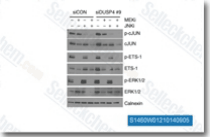
|
|
| S7397 | Sorafenib (BAY 43-9006) | Sorafenib is a multikinase inhibitor of Raf-1 and B-Raf with IC50 of 6 nM and 22 nM in cell-free assays, respectively. Sorafenib inhibits VEGFR-2, VEGFR-3, PDGFR-β, Flt-3 and c-KIT with IC50 of 90 nM, 20 nM, 57 nM, 59 nM and 68 nM, respectively. Sorafenib induces autophagy and apoptosis and activates ferroptosis with anti-tumor activity. |
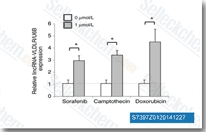
|
|
| S1040 | Sorafenib tosylate | Sorafenib tosylate is a multikinase inhibitor of Raf-1 and B-Raf with IC50 of 6 nM and 22 nM in cell-free assays, respectively. Sorafenib Tosylate inhibits VEGFR-2, VEGFR-3, PDGFR-β, Flt-3 and c-KIT with IC50 of 90 nM, 20 nM, 57 nM, 59 nM and 68 nM, respectively. Sorafenib Tosylate induces autophagy and apoptosis and activates ferroptosis with anti-tumor activity. |
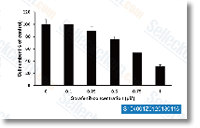
|
|
| S1526 | Quizartinib (AC220) | Quizartinib (AC220) is a second-generation FLT3 inhibitor for Flt3(ITD/WT) with IC50 of 1.1 nM/4.2 nM in MV4-11 and RS4;11 cells, respectively, 10-fold more selective for Flt3 than KIT, PDGFRα, PDGFRβ, RET, and CSF-1R. Quizartinib (AC220) induces apoptosis of tumor cells. Phase 3. |
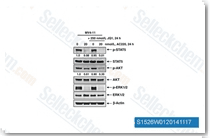
|
|
| S1048 | Tozasertib (VX-680) | Tozasertib (VX-680) is a pan-Aurora inhibitor, mostly against Aurora A with Kiapp of 0.6 nM in a cell-free assay, less potent towards Aurora B/Aurora C and 100-fold more selective for Aurora A than 55 other kinases. The only exceptions are Fms-related tyrosine kinase-3 (FLT-3) and BCR-ABL tyrosine kinase, which are inhibited by the Tozasertib with both Ki of 30 nM. Tozasertib induces apoptosis and autophagy. Phase 2. |
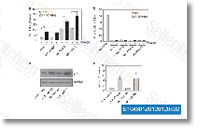
|
|
| S2194 | R406 | R406(R406 besylate) is a potent Syk inhibitor with IC50 of 41 nM in cell-free assays, strongly inhibits Syk but not Lyn, 5-fold less potent to Flt3. R406 induces apoptosis. Phase 1. |
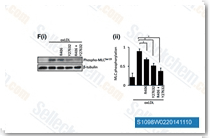
|
|
| S7083 | Ceritinib | Ceritinib is a potent inhibitor against ALK with IC50 of 0.2 nM in cell-free assays. Ceritinib (LDK378) also inhibits IGF-1R, InsR, STK22D and FLT3 with IC50 of 8 nM, 7 nM, 23 nM and 60 nM, respectively. Phase 3. |
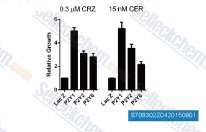
|
|
| S1533 | R406 (free base) | R406 (free base) is a potent Syk inhibitor with IC50 of 41 nM in a cell-free assay, strongly inhibits Syk but not Lyn, 5-fold less potent to Flt3. R406 (free base) triggers apoptosis. Phase 1. |
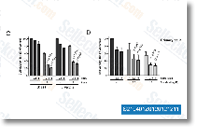
|
|
| S4001 | Cabozantinib malate | Cabozantinib malate (XL184) is the malate of Cabozantinib, a potent VEGFR2 inhibitor with IC50 of 0.035 nM and also inhibits c-Met, Ret (c-Ret), Kit (c-Kit), Flt-1/3/4, Tie2, and AXL with IC50 of 1.3 nM, 4 nM, 4.6 nM, 12 nM/11.3 nM/6 nM, 14.3 nM and 7 nM in cell-free assays, respectively. Cabozantinib malate (XL184) induces apoptosis. |
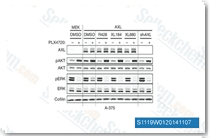
|
|
| S7818 | Pexidartinib (PLX3397) | Pexidartinib (PLX3397) is an oral, potent multi-targeted receptor tyrosine kinase inhibitor of CSF-1R, Kit (c-Kit), and FLT3 with IC50 of 20 nM, 10 nM and 160 nM, respectively. Pexidartinib (PLX3397) induces apoptosis and necrosis with antitumor activity. Phase 3. |
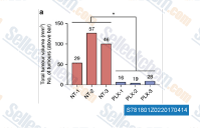
|
|
| S2730 | Crenolanib | Crenolanib is a potent and selective inhibitor of PDGFRα/β with Kd of 2.1 nM/3.2 nM in CHO cells, also potently inhibits FLT3, sensitive to D842V mutation not V561D mutation, >100-fold more selective for PDGFR than c-Kit, VEGFR-2, TIE-2, FGFR-2, EGFR, erbB2, and Src. Crenolanib helps to induce mitophagy. |
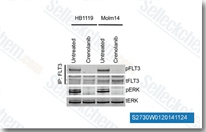
|
|
| S1111 | Foretinib | Foretinib is an ATP-competitive inhibitor of HGFR and VEGFR, mostly for Met (c-Met) and KDR with IC50 of 0.4 nM and 0.9 nM in cell-free assays. Less potent against Ron, Flt-1/3/4, Kit (c-Kit), PDGFRα/β and Tie-2, and little activity to FGFR1 and EGFR. Phase 2. |
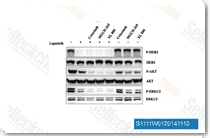
|
|
| S2736 | Fedratinib (TG101348) | Fedratinib (SAR302503, TG101348) is a selective inhibitor of JAK2 with IC50 of 3 nM in cell-free assays, 35- and 334-fold more selective for JAK2 versus JAK1 and JAK3. Fedratinib also inhibits FMS-like tyrosine kinase 3 (FLT3) and RET (c-RET) with IC50 of 15 nM and 48 nM, respectively. Fedratinib has potential antineoplastic activity. Fedratinib inhibits proliferation and induces apoptosis. Phase 2. |
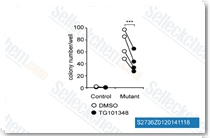
|
|
| S1018 | Dovitinib (TKI-258) | Dovitinib (TKI258, CHIR258) is a multitargeted RTK inhibitor, mostly for class III (FLT3/c-Kit) with IC50 of 1 nM/2 nM, also potent to class IV (FGFR1/3) and class V (VEGFR1-4) RTKs with IC50 of 8-13 nM, less potent to InsR, EGFR, c-Met, EphA2, Tie2, IGF-1R and HER2 in cell-free assays. Phase 4. |
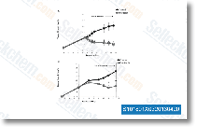
|
|
| S8032 | PRT062607 (P505-15) HCl | PRT062607 (P505-15, BIIB057, PRT-2607) is a novel, highly selective Syk inhibitor with IC50 of 1 nM in cell-free assays, >80-fold selective for Syk than Fgr, PAK5, Lyn, FAK, Pyk2, FLT3, MLK1 and Zap70. |
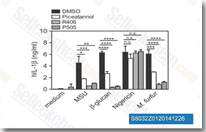
|
|
| S2198 | SGI-1776 free base | SGI-1776 free base is a novel ATP competitive inhibitor of Pim1 with IC50 of 7 nM in a cell-free assay, 50- and 10-fold selective versus Pim2 and Pim3, also potent to Flt3 and haspin. SGI-1776 induces apoptosis and autophagy. |
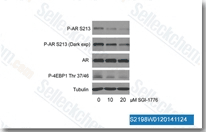
|
|
| S7754 | Gilteritinib (ASP2215) | Gilteritinib (ASP2215) is a small-molecule FLT3/AXL inhibitor with IC50 values of 0.29 nM and 0.73 nM for FLT3 and AXL, respectively. It inhibits FLT3 at an IC50 value that was approximately 800-fold more potent than the concentration required to inhibit c-KIT (230 nM). | ||
| S7119 | Go6976 | Go6976 (PD406976) is a potent PKC inhibitor with IC50 of 7.9 nM, 2.3 nM, and 6.2 nM for PKC (Rat brain), PKCα, and PKCβ1, respectively. Also a potent inhibitor of JAK2 and Flt3. |
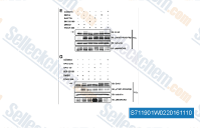
|
|
| S8229 | Brigatinib | Brigatinib is a potent and selective ALK (IC50, 0.6 nM) and ROS1 (IC50, 0.9 nM) inhibitor. It also inhibits IGF-1R, FLT3, and mutant variants of FLT3 (D835Y) and EGFR with lower potentcy. |
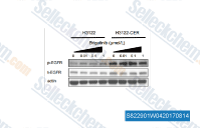
|
|
| S1003 | Linifanib (ABT-869) | Linifanib (ABT-869, AL39324, RG3635) is a novel, potent ATP-competitive VEGFR/PDGFR inhibitor for KDR, CSF-1R, Flt-1/3 and PDGFRβ with IC50 of 4 nM, 3 nM, 3 nM/4 nM and 66 nM respectively, mostly effective in mutant kinase-dependent cancer cells (i.e. FLT3). Linifanib (ABT-869) induces autophagy and apoptosis. Phase 3. |
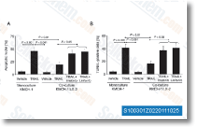
|
|
| S7765 | Dovitinib (TKI258) Lactate monohydrate | Dovitinib (TKI258) Lactate monohydrate is the Lactate of Dovitinib, which is a multitargeted RTK inhibitor, mostly for class III (FLT3/c-Kit) with IC50 of 1 nM/2 nM, also potent to class IV (FGFR1/3) and class V (VEGFR1-4) RTKs with IC50 of 8-13 nM, less potent to InsR, EGFR, c-Met, EphA2, Tie2, IGFR1 and HER2. Phase 4. |
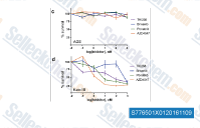
|
|
| S2692 | TG101209 | TG101209 is a selective JAK2 inhibitor with IC50 of 6 nM, less potent to Flt3 and RET (c-RET) with IC50 of 25 nM and 17 nM in cell-free assays, ~30-fold selective for JAK2 than JAK3, sensitive to JAK2V617F and MPLW515L/K mutations. |
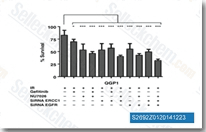
|
|
| S1244 | Amuvatinib (MP-470) | Amuvatinib (MP-470, HPK 56) is a potent and multi-targeted inhibitor of c-Kit, PDGFRα and Flt3 with IC50 of 10 nM, 40 nM and 81 nM, respectively. Amuvatinib suppresses c-MET and c-RET. Amuvatinib is also active as a DNA repair protein Rad51 inhibitor with antineoplastic activity. Phase 2. |
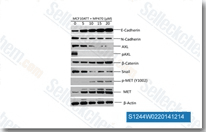
|
|
| S1043 | Tandutinib (MLN518) | Tandutinib (MLN518, CT53518, NSC726292) is a potent FLT3 antagonist with IC50 of 0.22 μM, also inhibits PDGFR and c-Kit, 15 to 20-fold higher potency for FLT3 versus CSF-1R and >100-fold selectivity for the same target versus FGFR, EGFR and KDR. Phase 2. |
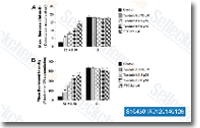
|
|
| S8057 | Pacritinib | Pacritinib is a potent and selective inhibitor of Janus Kinase 2 (JAK2) and Fms-Like Tyrosine Kinase-3 (FLT3) with IC50s of 23 and 22 nM in cell-free assays, respectively. Phase 3. |
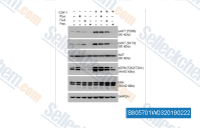
|
|
| S2158 | KW-2449 | KW-2449 is a multiple-targeted inhibitor, mostly for Flt3 with IC50 of 6.6 nM, modestly potent to FGFR1, Bcr-Abl and Aurora A; little effect on PDGFRβ, IGF-1R, EGFR. Phase 1. |
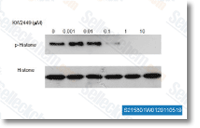
|
|
| S1181 | ENMD-2076 | ENMD-2076 has selective activity against Aurora A and Flt3 with IC50 of 14 nM and 1.86 nM, 25-fold selective for Aurora A than over Aurora B and less potent to RET, SRC, NTRK1/TRKA, CSF1R/FMS, VEGFR2/KDR, FGFR and PDGFRα. ENMD-2076 inhibits the growth of a wide range of human solid tumor and hematopoietic cancer cell lines with IC50 from 0.025 to 0.7 μM, which induces apoptosis and G2/M phase arrest. Phase 2. |
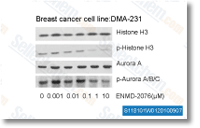
|
|
| S7576 | UNC2025 HCl | UNC-2025 HCl is a potent and orally bioavailable dual MER/FLT3 inhibitor with IC50 of 0.74 nM and 0.8 nM, respectively, about 20-fold selectivity over Axl and Tyro3. | ||
| S7014 | Merestinib (LY2801653) | Merestinib (LY2801653) is a type-II ATP competitive, slow-off inhibitor of Met (c-Met) tyrosine kinase with a dissociation constant (Ki) of 2 nM, a pharmacodynamic residence time (Koff) of 0.00132 min(-1) and t1/2 of 525 min. Merestinib (LY2801653) also inhibits MST1R, AXL, ROS1, MKNK1/2, FLT3, MERTK, DDR1 and DDR2 with IC50 of 11 nM, 2 nM, 23 nM, 7 nM, 7 nM, 10 nM, 0.1 nM and 7 nM, respectively. | ||
| S9662 | UNC2025 | UNC2025 is a potent and orally active dual inhibitor of FLT3 and MER with IC50 of 0.35 nM and 0.46 nM, respectively. UNC2025 also inhibits AXL, TRKA, TRKC, QIK, TYRO3, SLK, NuaK1, Kit (c-Kit) and Met (c-Met) with IC50 of 1.65 nM, 1.67 nM, 4.38 nM, 5.75 nM, 5.83 nM, 6.14 nM, 7.97 nM, 8.18 nM and 364 nM, respectively. | ||
| S8442 | TAK-659 Hydrochloride | TAK-659 Hydrochloride is a potent and selective inhibitor of spleen tyrosine kinase (SYK) with an IC50 value of 3.2 nM. It is selective against most other kinases, but potent toward both SYK and FLT3. | ||
| S6662 | AST-487 (NVP-AST487) | AST-487 (NVP-AST487), a N,N'-diphenyl urea,is an ATP competitive inhibitor of Flt3 with ki of 0.12 μM.Besides FLT3, AST487 also inhibits RET,KDR,c-KIT,and c-ABL kinase with IC50 values below 1 μM. | ||
| S7003 | AZD2932 | AZD2932 is a potent and mutil-targeted protein tyrosine kinase inhibitor with IC50 of 8 nM, 4 nM, 7 nM, and 9 nM for VEGFR-2, PDGFRβ, Flt-3, and c-Kit, respectively. | ||
| S8023 | TCS 359 | TCS 359 is a potent FLT3 inhibitor with IC50 of 42 nM. | ||
| S0278 | SU5614 | SU5614 (Chloro-SU5416, Chloro-Semaxanib) is a small molecule receptor tyrosine kinases (RTK) inhibitor of VEGFR-2, c-kit, and both wild-type and mutant FLT3. SU5614 reduces cell proliferation and induces apoptosis. | ||
| S9779 | Emavusertib (CA-4948) | Emavusertib (CA-4948) is a potent and orally bioavailable inhibitor of interleukin-1 receptor-associated kinase 4/FMS-like Tyrosine Kinase 3 (IRAK4/FLT3) with anti-tumor activity. | ||
| S7545 | G-749 | G-749 is a novel and potent FLT3 inhibitor with IC50 of 0.4 nM, 0.6 nM and 1 nM for FLT3 (WT), FLT3 (D835Y), and Mer, respectively, showing lower potency against other tyrosine kinases. | ||
| S1099 | SKLB4771 (FLT3-IN-1) | SKLB4771 is a potent and selective inhibitor of human receptor-type tyrosine-protein kinase FLT3 with IC50 of 10 nM. | ||
| S7533 | AMG 925 | AMG 925 is a potent and orally bioavailable dual FLT3/CDK4 inhibitor with IC50 of 1 nM and 3 nM, respectively. | ||
| S2018 | ENMD-2076 L-(+)-Tartaric acid | ENMD-2076 L-(+)-Tartaric acid is the tartaric acid of ENMD-2076, selective activity against Aurora A and Flt3 with IC50 of 14 nM and 1.86 nM, 25-fold more selective for Aurora A than Aurora B and less potent to VEGFR2/KDR and VEGFR3, FGFR1 and FGFR2 and PDGFRα. Phase 2. |

|
|
| S7002 | Zotiraciclib | Zotiraciclib (SB1317; TG02) is a novel small molecule potent CDK/JAK2/FLT3 inhibitor, emerged with potent CDK (IC50 against CDKs 1, 2 and 9 = 9, 5 and 3 nM, respectively), FLT3 (IC50 = 19 nM) and JAK2 (IC50 = 19 nM) potency. | ||
| E2387 | FLT3-IN-2 | FLT3-IN-2 is a FLT3 inhibitor with IC50 of < 1 μM. | ||
| E1437 | PHI-101 | PHI-101 is an orally active, potent third-generation inhibitor of FLT3 that overcomes resistance to multiple drug-resistant mutations. It has potential for research in relapsed or refractory acute myeloid leukemia (AML). | ||
| S0550 | 5'-Fluoroindirubinoxime | 5'-Fluoroindirubinoxime (5’-FIO, compound 13), an indirubin derivative, is a potent FLT3 inhibitor, with an IC50 of 15 nM. | ||
| E4598 | MEN1703(SEL24,SEL24-B489) | MEN1703(SEL24-B489,SEL24, Pim/flt3 kinase inhibitor SEL24) is a potent, type I, orally active, dual inhibitor of PIM and FLT3-ITD, that exhibits Kd values of 2 nM for PIM1, 2 nM for PIM2 and 3 nM for PIM3, respectively. MEN1703 exhibits its broad therapeutic potential in treatment of acute myeloid leukemia. | ||
| S9275 | Isoguanosine | Isoguanosine (Crotonoside) inhibits FLT3 and HDAC3/6 for the treatment of AML.Isoguanosine is a naturally occurring active isomer of guanosine that is found in the seeds of Croton tiglium. | ||
| S6839 | MRX-2843 | MRX-2843 (UNC2371) is an orally active dual inhibitor of tyrosine kinases MERTK and FLT3 with IC50 of 1.3 nM and 0.64 nM, respectively. | ||
| S7640New | Lestaurtinib | Lestaurtinib (CEP-701, KT-5555) is a derivative of the indolocarbazole K252 and a staurosporine analog. It is an orally active inhibitor of receptor protein tyrosine kinases (RPTKs), which inhibits FLT3 and Trk, with an IC50 of 3 nM and < 25 nM, respectively. It also inhibits JAK2 with an IC50 of 0.9 nM. | ||
| A2493 | Anti-FLT3 / CD135 | Anti-FLT3 / CD135 (IMC-EB10) is a fully human IgG1 monoclonal antibody, targeting the FLT3 tyrosine kinase receptor (CD135) with potential antineoplastic activity. It binds to FLT3 and blocks FLT3 ligand binding to FLT3 and subsequent FLT3 phosphorylation, which may result in the inhibition of FLT3-mediated signal transduction pathways. MW: 145.5 KD. | ||
| S5986 | FLT3-IN-3 | FLT3-IN-3 is a potent inhibitor of FLT3 with IC50 values of 13 nM and 8 nM for FLT3 WT and FLT3 D835Y, respectively. FLT3-IN-3 effectively suppresses the proliferation of FLT3-ITD-positive MV4-11 and MOLM-13 cell lines at low nanomolar concentrations. | ||
| E4720New | Flonoltinib | Flonoltinib (JAK2/FLT3-IN-1) is a potent and selective dual inhibitor of JAK2 and FLT3, with IC50 of of 0.8, 1.4, and 15 nM against JAK2, JAK2V617F, and FLT3, respectively, in in vitro kinase assays. It also inhibits cell proliferation and induces G2/M cell cycle arrest and apoptosis in Hemophagocytic Lymphohistiocytosis (HLH) patients' CD8+T cells, CTLL2 cells, and RAW 264.7 cells. | ||
| S6060 | HPK1-IN-2 | HPK1-IN-2 is a potent and orally active inhibitor of hematopoietic progenitor kinase-1 (HPK1, a serine/threonine Ste20-related protein kinase), Lck and Flt3 with IC50 of <0.05 μM, IC50 of <0.5 μM and IC50 of <0.05 μM, respectively. HPK1-IN-2 exhibits antitumor activity. | ||
| E2658 | FN-1501 | FN-1501 is a potent inhibitor of Fms-like receptor tyrosine kinase 3 (FLT3) and cyclin-dependent kinase (CDK), with IC50s of 2.47, 0.85, 1.96, and 0.28 nM for CDK2/cyclin A, CDK4/cyclin D1, CDK6/cyclin D1 and FLT3, respectively. | ||
| S9892 | HM43239 | HM43239 is a novel potent small molecule FLT3 inhibitor that selectively inhibits not only FLT3 wild type, ITD mutants or TKD mutations, but also FLT3 ITD/TKD double mutations. IC50s' of HM43239 against FLT3 WT, FLT3 ITD and FLT3 D835Y kinases are 1.1 nM, 1.8 nM and 1.0 nM, respectively. | ||
| S1460 | SP600125 | SP600125 (Nsc75890) is a broad-spectrum JNK inhibitor for JNK1, JNK2 and JNK3 with IC50 of 40 nM, 40 nM and 90 nM in cell-free assays, respectively; 10-fold greater selectivity against MKK4, 25-fold greater selectivity against MKK3, MKK6, PKB, and PKCα, and 100-fold selectivity against ERK2, p38, Chk1, EGFR etc. SP600125 is also a broad‐spectrum inhibitor of serine/threonine kinases including Aurora kinase A,FLT3 and TRKA with of IC50 of 60 nM, 90 nM and 70 nM. SP600125 inhibits autophagy and activates apoptosis. |

|
|
| S7397 | Sorafenib (BAY 43-9006) | Sorafenib is a multikinase inhibitor of Raf-1 and B-Raf with IC50 of 6 nM and 22 nM in cell-free assays, respectively. Sorafenib inhibits VEGFR-2, VEGFR-3, PDGFR-β, Flt-3 and c-KIT with IC50 of 90 nM, 20 nM, 57 nM, 59 nM and 68 nM, respectively. Sorafenib induces autophagy and apoptosis and activates ferroptosis with anti-tumor activity. |

|
|
| S1040 | Sorafenib tosylate | Sorafenib tosylate is a multikinase inhibitor of Raf-1 and B-Raf with IC50 of 6 nM and 22 nM in cell-free assays, respectively. Sorafenib Tosylate inhibits VEGFR-2, VEGFR-3, PDGFR-β, Flt-3 and c-KIT with IC50 of 90 nM, 20 nM, 57 nM, 59 nM and 68 nM, respectively. Sorafenib Tosylate induces autophagy and apoptosis and activates ferroptosis with anti-tumor activity. |

|
|
| S1526 | Quizartinib (AC220) | Quizartinib (AC220) is a second-generation FLT3 inhibitor for Flt3(ITD/WT) with IC50 of 1.1 nM/4.2 nM in MV4-11 and RS4;11 cells, respectively, 10-fold more selective for Flt3 than KIT, PDGFRα, PDGFRβ, RET, and CSF-1R. Quizartinib (AC220) induces apoptosis of tumor cells. Phase 3. |

|
|
| S1048 | Tozasertib (VX-680) | Tozasertib (VX-680) is a pan-Aurora inhibitor, mostly against Aurora A with Kiapp of 0.6 nM in a cell-free assay, less potent towards Aurora B/Aurora C and 100-fold more selective for Aurora A than 55 other kinases. The only exceptions are Fms-related tyrosine kinase-3 (FLT-3) and BCR-ABL tyrosine kinase, which are inhibited by the Tozasertib with both Ki of 30 nM. Tozasertib induces apoptosis and autophagy. Phase 2. |

|
|
| S2194 | R406 | R406(R406 besylate) is a potent Syk inhibitor with IC50 of 41 nM in cell-free assays, strongly inhibits Syk but not Lyn, 5-fold less potent to Flt3. R406 induces apoptosis. Phase 1. |

|
|
| S7083 | Ceritinib | Ceritinib is a potent inhibitor against ALK with IC50 of 0.2 nM in cell-free assays. Ceritinib (LDK378) also inhibits IGF-1R, InsR, STK22D and FLT3 with IC50 of 8 nM, 7 nM, 23 nM and 60 nM, respectively. Phase 3. |

|
|
| S1533 | R406 (free base) | R406 (free base) is a potent Syk inhibitor with IC50 of 41 nM in a cell-free assay, strongly inhibits Syk but not Lyn, 5-fold less potent to Flt3. R406 (free base) triggers apoptosis. Phase 1. |

|
|
| S4001 | Cabozantinib malate | Cabozantinib malate (XL184) is the malate of Cabozantinib, a potent VEGFR2 inhibitor with IC50 of 0.035 nM and also inhibits c-Met, Ret (c-Ret), Kit (c-Kit), Flt-1/3/4, Tie2, and AXL with IC50 of 1.3 nM, 4 nM, 4.6 nM, 12 nM/11.3 nM/6 nM, 14.3 nM and 7 nM in cell-free assays, respectively. Cabozantinib malate (XL184) induces apoptosis. |

|
|
| S7818 | Pexidartinib (PLX3397) | Pexidartinib (PLX3397) is an oral, potent multi-targeted receptor tyrosine kinase inhibitor of CSF-1R, Kit (c-Kit), and FLT3 with IC50 of 20 nM, 10 nM and 160 nM, respectively. Pexidartinib (PLX3397) induces apoptosis and necrosis with antitumor activity. Phase 3. |

|
|
| S2730 | Crenolanib | Crenolanib is a potent and selective inhibitor of PDGFRα/β with Kd of 2.1 nM/3.2 nM in CHO cells, also potently inhibits FLT3, sensitive to D842V mutation not V561D mutation, >100-fold more selective for PDGFR than c-Kit, VEGFR-2, TIE-2, FGFR-2, EGFR, erbB2, and Src. Crenolanib helps to induce mitophagy. |

|
|
| S1111 | Foretinib | Foretinib is an ATP-competitive inhibitor of HGFR and VEGFR, mostly for Met (c-Met) and KDR with IC50 of 0.4 nM and 0.9 nM in cell-free assays. Less potent against Ron, Flt-1/3/4, Kit (c-Kit), PDGFRα/β and Tie-2, and little activity to FGFR1 and EGFR. Phase 2. |

|
|
| S2736 | Fedratinib (TG101348) | Fedratinib (SAR302503, TG101348) is a selective inhibitor of JAK2 with IC50 of 3 nM in cell-free assays, 35- and 334-fold more selective for JAK2 versus JAK1 and JAK3. Fedratinib also inhibits FMS-like tyrosine kinase 3 (FLT3) and RET (c-RET) with IC50 of 15 nM and 48 nM, respectively. Fedratinib has potential antineoplastic activity. Fedratinib inhibits proliferation and induces apoptosis. Phase 2. |

|
|
| S1018 | Dovitinib (TKI-258) | Dovitinib (TKI258, CHIR258) is a multitargeted RTK inhibitor, mostly for class III (FLT3/c-Kit) with IC50 of 1 nM/2 nM, also potent to class IV (FGFR1/3) and class V (VEGFR1-4) RTKs with IC50 of 8-13 nM, less potent to InsR, EGFR, c-Met, EphA2, Tie2, IGF-1R and HER2 in cell-free assays. Phase 4. |

|
|
| S8032 | PRT062607 (P505-15) HCl | PRT062607 (P505-15, BIIB057, PRT-2607) is a novel, highly selective Syk inhibitor with IC50 of 1 nM in cell-free assays, >80-fold selective for Syk than Fgr, PAK5, Lyn, FAK, Pyk2, FLT3, MLK1 and Zap70. |

|
|
| S2198 | SGI-1776 free base | SGI-1776 free base is a novel ATP competitive inhibitor of Pim1 with IC50 of 7 nM in a cell-free assay, 50- and 10-fold selective versus Pim2 and Pim3, also potent to Flt3 and haspin. SGI-1776 induces apoptosis and autophagy. |

|
|
| S7754 | Gilteritinib (ASP2215) | Gilteritinib (ASP2215) is a small-molecule FLT3/AXL inhibitor with IC50 values of 0.29 nM and 0.73 nM for FLT3 and AXL, respectively. It inhibits FLT3 at an IC50 value that was approximately 800-fold more potent than the concentration required to inhibit c-KIT (230 nM). | ||
| S7119 | Go6976 | Go6976 (PD406976) is a potent PKC inhibitor with IC50 of 7.9 nM, 2.3 nM, and 6.2 nM for PKC (Rat brain), PKCα, and PKCβ1, respectively. Also a potent inhibitor of JAK2 and Flt3. |

|
|
| S8229 | Brigatinib | Brigatinib is a potent and selective ALK (IC50, 0.6 nM) and ROS1 (IC50, 0.9 nM) inhibitor. It also inhibits IGF-1R, FLT3, and mutant variants of FLT3 (D835Y) and EGFR with lower potentcy. |

|
|
| S1003 | Linifanib (ABT-869) | Linifanib (ABT-869, AL39324, RG3635) is a novel, potent ATP-competitive VEGFR/PDGFR inhibitor for KDR, CSF-1R, Flt-1/3 and PDGFRβ with IC50 of 4 nM, 3 nM, 3 nM/4 nM and 66 nM respectively, mostly effective in mutant kinase-dependent cancer cells (i.e. FLT3). Linifanib (ABT-869) induces autophagy and apoptosis. Phase 3. |

|
|
| S7765 | Dovitinib (TKI258) Lactate monohydrate | Dovitinib (TKI258) Lactate monohydrate is the Lactate of Dovitinib, which is a multitargeted RTK inhibitor, mostly for class III (FLT3/c-Kit) with IC50 of 1 nM/2 nM, also potent to class IV (FGFR1/3) and class V (VEGFR1-4) RTKs with IC50 of 8-13 nM, less potent to InsR, EGFR, c-Met, EphA2, Tie2, IGFR1 and HER2. Phase 4. |

|
|
| S2692 | TG101209 | TG101209 is a selective JAK2 inhibitor with IC50 of 6 nM, less potent to Flt3 and RET (c-RET) with IC50 of 25 nM and 17 nM in cell-free assays, ~30-fold selective for JAK2 than JAK3, sensitive to JAK2V617F and MPLW515L/K mutations. |

|
|
| S1244 | Amuvatinib (MP-470) | Amuvatinib (MP-470, HPK 56) is a potent and multi-targeted inhibitor of c-Kit, PDGFRα and Flt3 with IC50 of 10 nM, 40 nM and 81 nM, respectively. Amuvatinib suppresses c-MET and c-RET. Amuvatinib is also active as a DNA repair protein Rad51 inhibitor with antineoplastic activity. Phase 2. |

|
|
| S1043 | Tandutinib (MLN518) | Tandutinib (MLN518, CT53518, NSC726292) is a potent FLT3 antagonist with IC50 of 0.22 μM, also inhibits PDGFR and c-Kit, 15 to 20-fold higher potency for FLT3 versus CSF-1R and >100-fold selectivity for the same target versus FGFR, EGFR and KDR. Phase 2. |

|
|
| S8057 | Pacritinib | Pacritinib is a potent and selective inhibitor of Janus Kinase 2 (JAK2) and Fms-Like Tyrosine Kinase-3 (FLT3) with IC50s of 23 and 22 nM in cell-free assays, respectively. Phase 3. |

|
|
| S2158 | KW-2449 | KW-2449 is a multiple-targeted inhibitor, mostly for Flt3 with IC50 of 6.6 nM, modestly potent to FGFR1, Bcr-Abl and Aurora A; little effect on PDGFRβ, IGF-1R, EGFR. Phase 1. |

|
|
| S1181 | ENMD-2076 | ENMD-2076 has selective activity against Aurora A and Flt3 with IC50 of 14 nM and 1.86 nM, 25-fold selective for Aurora A than over Aurora B and less potent to RET, SRC, NTRK1/TRKA, CSF1R/FMS, VEGFR2/KDR, FGFR and PDGFRα. ENMD-2076 inhibits the growth of a wide range of human solid tumor and hematopoietic cancer cell lines with IC50 from 0.025 to 0.7 μM, which induces apoptosis and G2/M phase arrest. Phase 2. |

|
|
| S7576 | UNC2025 HCl | UNC-2025 HCl is a potent and orally bioavailable dual MER/FLT3 inhibitor with IC50 of 0.74 nM and 0.8 nM, respectively, about 20-fold selectivity over Axl and Tyro3. | ||
| S7014 | Merestinib (LY2801653) | Merestinib (LY2801653) is a type-II ATP competitive, slow-off inhibitor of Met (c-Met) tyrosine kinase with a dissociation constant (Ki) of 2 nM, a pharmacodynamic residence time (Koff) of 0.00132 min(-1) and t1/2 of 525 min. Merestinib (LY2801653) also inhibits MST1R, AXL, ROS1, MKNK1/2, FLT3, MERTK, DDR1 and DDR2 with IC50 of 11 nM, 2 nM, 23 nM, 7 nM, 7 nM, 10 nM, 0.1 nM and 7 nM, respectively. | ||
| S9662 | UNC2025 | UNC2025 is a potent and orally active dual inhibitor of FLT3 and MER with IC50 of 0.35 nM and 0.46 nM, respectively. UNC2025 also inhibits AXL, TRKA, TRKC, QIK, TYRO3, SLK, NuaK1, Kit (c-Kit) and Met (c-Met) with IC50 of 1.65 nM, 1.67 nM, 4.38 nM, 5.75 nM, 5.83 nM, 6.14 nM, 7.97 nM, 8.18 nM and 364 nM, respectively. | ||
| S8442 | TAK-659 Hydrochloride | TAK-659 Hydrochloride is a potent and selective inhibitor of spleen tyrosine kinase (SYK) with an IC50 value of 3.2 nM. It is selective against most other kinases, but potent toward both SYK and FLT3. | ||
| S6662 | AST-487 (NVP-AST487) | AST-487 (NVP-AST487), a N,N'-diphenyl urea,is an ATP competitive inhibitor of Flt3 with ki of 0.12 μM.Besides FLT3, AST487 also inhibits RET,KDR,c-KIT,and c-ABL kinase with IC50 values below 1 μM. | ||
| S7003 | AZD2932 | AZD2932 is a potent and mutil-targeted protein tyrosine kinase inhibitor with IC50 of 8 nM, 4 nM, 7 nM, and 9 nM for VEGFR-2, PDGFRβ, Flt-3, and c-Kit, respectively. | ||
| S8023 | TCS 359 | TCS 359 is a potent FLT3 inhibitor with IC50 of 42 nM. | ||
| S0278 | SU5614 | SU5614 (Chloro-SU5416, Chloro-Semaxanib) is a small molecule receptor tyrosine kinases (RTK) inhibitor of VEGFR-2, c-kit, and both wild-type and mutant FLT3. SU5614 reduces cell proliferation and induces apoptosis. | ||
| S9779 | Emavusertib (CA-4948) | Emavusertib (CA-4948) is a potent and orally bioavailable inhibitor of interleukin-1 receptor-associated kinase 4/FMS-like Tyrosine Kinase 3 (IRAK4/FLT3) with anti-tumor activity. | ||
| S7545 | G-749 | G-749 is a novel and potent FLT3 inhibitor with IC50 of 0.4 nM, 0.6 nM and 1 nM for FLT3 (WT), FLT3 (D835Y), and Mer, respectively, showing lower potency against other tyrosine kinases. | ||
| S1099 | SKLB4771 (FLT3-IN-1) | SKLB4771 is a potent and selective inhibitor of human receptor-type tyrosine-protein kinase FLT3 with IC50 of 10 nM. | ||
| S7533 | AMG 925 | AMG 925 is a potent and orally bioavailable dual FLT3/CDK4 inhibitor with IC50 of 1 nM and 3 nM, respectively. | ||
| S2018 | ENMD-2076 L-(+)-Tartaric acid | ENMD-2076 L-(+)-Tartaric acid is the tartaric acid of ENMD-2076, selective activity against Aurora A and Flt3 with IC50 of 14 nM and 1.86 nM, 25-fold more selective for Aurora A than Aurora B and less potent to VEGFR2/KDR and VEGFR3, FGFR1 and FGFR2 and PDGFRα. Phase 2. |

|
|
| S7002 | Zotiraciclib | Zotiraciclib (SB1317; TG02) is a novel small molecule potent CDK/JAK2/FLT3 inhibitor, emerged with potent CDK (IC50 against CDKs 1, 2 and 9 = 9, 5 and 3 nM, respectively), FLT3 (IC50 = 19 nM) and JAK2 (IC50 = 19 nM) potency. | ||
| E2387 | FLT3-IN-2 | FLT3-IN-2 is a FLT3 inhibitor with IC50 of < 1 μM. | ||
| E1437 | PHI-101 | PHI-101 is an orally active, potent third-generation inhibitor of FLT3 that overcomes resistance to multiple drug-resistant mutations. It has potential for research in relapsed or refractory acute myeloid leukemia (AML). | ||
| S0550 | 5'-Fluoroindirubinoxime | 5'-Fluoroindirubinoxime (5’-FIO, compound 13), an indirubin derivative, is a potent FLT3 inhibitor, with an IC50 of 15 nM. | ||
| E4598 | MEN1703(SEL24,SEL24-B489) | MEN1703(SEL24-B489,SEL24, Pim/flt3 kinase inhibitor SEL24) is a potent, type I, orally active, dual inhibitor of PIM and FLT3-ITD, that exhibits Kd values of 2 nM for PIM1, 2 nM for PIM2 and 3 nM for PIM3, respectively. MEN1703 exhibits its broad therapeutic potential in treatment of acute myeloid leukemia. | ||
| S9275 | Isoguanosine | Isoguanosine (Crotonoside) inhibits FLT3 and HDAC3/6 for the treatment of AML.Isoguanosine is a naturally occurring active isomer of guanosine that is found in the seeds of Croton tiglium. | ||
| S6839 | MRX-2843 | MRX-2843 (UNC2371) is an orally active dual inhibitor of tyrosine kinases MERTK and FLT3 with IC50 of 1.3 nM and 0.64 nM, respectively. | ||
| S7640New | Lestaurtinib | Lestaurtinib (CEP-701, KT-5555) is a derivative of the indolocarbazole K252 and a staurosporine analog. It is an orally active inhibitor of receptor protein tyrosine kinases (RPTKs), which inhibits FLT3 and Trk, with an IC50 of 3 nM and < 25 nM, respectively. It also inhibits JAK2 with an IC50 of 0.9 nM. | ||
| S5986 | FLT3-IN-3 | FLT3-IN-3 is a potent inhibitor of FLT3 with IC50 values of 13 nM and 8 nM for FLT3 WT and FLT3 D835Y, respectively. FLT3-IN-3 effectively suppresses the proliferation of FLT3-ITD-positive MV4-11 and MOLM-13 cell lines at low nanomolar concentrations. | ||
| E4720New | Flonoltinib | Flonoltinib (JAK2/FLT3-IN-1) is a potent and selective dual inhibitor of JAK2 and FLT3, with IC50 of of 0.8, 1.4, and 15 nM against JAK2, JAK2V617F, and FLT3, respectively, in in vitro kinase assays. It also inhibits cell proliferation and induces G2/M cell cycle arrest and apoptosis in Hemophagocytic Lymphohistiocytosis (HLH) patients' CD8+T cells, CTLL2 cells, and RAW 264.7 cells. | ||
| S6060 | HPK1-IN-2 | HPK1-IN-2 is a potent and orally active inhibitor of hematopoietic progenitor kinase-1 (HPK1, a serine/threonine Ste20-related protein kinase), Lck and Flt3 with IC50 of <0.05 μM, IC50 of <0.5 μM and IC50 of <0.05 μM, respectively. HPK1-IN-2 exhibits antitumor activity. | ||
| E2658 | FN-1501 | FN-1501 is a potent inhibitor of Fms-like receptor tyrosine kinase 3 (FLT3) and cyclin-dependent kinase (CDK), with IC50s of 2.47, 0.85, 1.96, and 0.28 nM for CDK2/cyclin A, CDK4/cyclin D1, CDK6/cyclin D1 and FLT3, respectively. | ||
| S9892 | HM43239 | HM43239 is a novel potent small molecule FLT3 inhibitor that selectively inhibits not only FLT3 wild type, ITD mutants or TKD mutations, but also FLT3 ITD/TKD double mutations. IC50s' of HM43239 against FLT3 WT, FLT3 ITD and FLT3 D835Y kinases are 1.1 nM, 1.8 nM and 1.0 nM, respectively. | ||
| A2493 | Anti-FLT3 / CD135 | Anti-FLT3 / CD135 (IMC-EB10) is a fully human IgG1 monoclonal antibody, targeting the FLT3 tyrosine kinase receptor (CD135) with potential antineoplastic activity. It binds to FLT3 and blocks FLT3 ligand binding to FLT3 and subsequent FLT3 phosphorylation, which may result in the inhibition of FLT3-mediated signal transduction pathways. MW: 145.5 KD. | ||
| S7640New | Lestaurtinib | Lestaurtinib (CEP-701, KT-5555) is a derivative of the indolocarbazole K252 and a staurosporine analog. It is an orally active inhibitor of receptor protein tyrosine kinases (RPTKs), which inhibits FLT3 and Trk, with an IC50 of 3 nM and < 25 nM, respectively. It also inhibits JAK2 with an IC50 of 0.9 nM. | ||
| E4720New | Flonoltinib | Flonoltinib (JAK2/FLT3-IN-1) is a potent and selective dual inhibitor of JAK2 and FLT3, with IC50 of of 0.8, 1.4, and 15 nM against JAK2, JAK2V617F, and FLT3, respectively, in in vitro kinase assays. It also inhibits cell proliferation and induces G2/M cell cycle arrest and apoptosis in Hemophagocytic Lymphohistiocytosis (HLH) patients' CD8+T cells, CTLL2 cells, and RAW 264.7 cells. |
